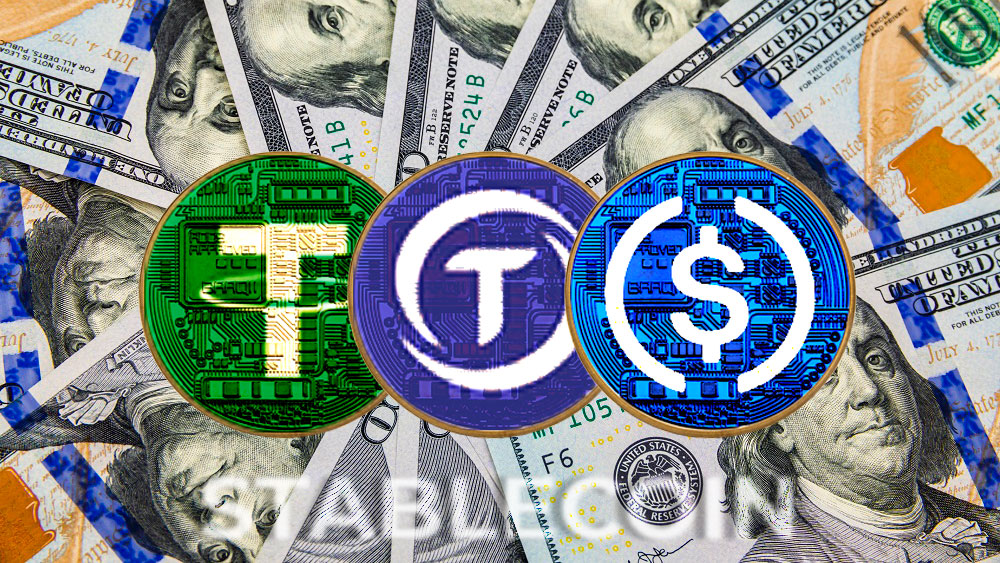Why Stablecoins Aren't Always Stable: Understanding the Factors That Affect Their Value on the Blockchain
 Sandeep Singh
Sandeep Singh
Stablecoins are a type of cryptocurrency that is designed to maintain a stable value, usually pegged to a fiat currency like the US dollar. Stablecoins are often used as a means of payment or as a store of value on blockchain networks. However, stablecoins can lose their peg and lose value due to a variety of factors. In this article, we will explore why stablecoins lose their prices on the blockchain, provide some historical context, and include coding examples.
History
The concept of stablecoins dates back to the early days of cryptocurrency. In 2014, BitShares launched a stablecoin called BitUSD, which was pegged to the US dollar. Since then, many other stablecoins have emerged, including Tether (USDT), which is currently the most widely used stablecoin.
Stablecoins are often used as a way to transfer value on blockchain networks. For example, if someone wants to send $100 worth of cryptocurrency to another person, they may use a stablecoin like USDT to ensure that the value remains stable throughout the transaction.
However, stablecoins are not always stable. Stablecoins can lose their peg and lose value due to a variety of factors.
Factors That Affect Stablecoin Prices
- Market Demand
The price of stablecoins is largely determined by market demand. If there is a high demand for stablecoins, the price will likely remain stable. However, if there is a low demand for stablecoins, the price may drop.
For example, in March 2020, the price of USDT dropped to as low as $0.85 due to a lack of market demand. This caused concern among investors and led to a decrease in the overall value of the cryptocurrency market.
- Collateralization
Most stablecoins are collateralized, meaning that they are backed by a reserve of assets, usually fiat currency. The collateralization ratio, or the ratio of the reserve to the circulating supply of stablecoins, can affect the stability of the price.
If the collateralization ratio is too low, there may not be enough reserve assets to maintain the peg. This can cause the stablecoin to lose value.
For example, in October 2018, the price of USDT dropped below its peg due to concerns about the collateralization ratio. It was later revealed that Tether had only backed USDT with 74% of its reserves, causing investors to lose confidence in the stability of the stablecoin.
- Black Swan Events
Black swan events, or unforeseen events that have a significant impact on the market, can also affect the stability of stablecoins. For example, the COVID-19 pandemic caused a significant drop in the value of many cryptocurrencies, including stablecoins.
Here is the basic example of the Stablecoin =>
pragma solidity ^0.8.0;
contract StableCoin {
string public name = "StableCoin";
string public symbol = "SC";
uint8 public decimals = 18;
uint256 public totalSupply;
uint256 public constant INITIAL_SUPPLY = 1000000 * (10 ** uint256(decimals));
mapping (address => uint256) public balances;
constructor() {
balances[msg.sender] = INITIAL_SUPPLY;
totalSupply = INITIAL_SUPPLY;
}
function transfer(address _to, uint256 _value) public returns (bool success) {
require(balances[msg.sender] >= _value);
balances[msg.sender] -= _value;
balances[_to] += _value;
emit Transfer(msg.sender, _to, _value);
return true;
}
event Transfer(address indexed _from, address indexed _to, uint256 _value);
}
This is a very basic ERC20 token contract. The transfer function allows users to transfer tokens to other addresses, while the balances mapping keeps track of each address's token balance. The totalSupply variable represents the total number of tokens in circulation.
To create a stablecoin, you would need to add additional functionality to the contract to ensure that the value of the token remains stable. This could be done using a variety of mechanisms, such as pegging the token to a specific asset or using an algorithm to adjust the token's supply based on market demand.
It's important to note that creating a true stablecoin is a complex task that requires a deep understanding of economics and financial markets. The code above is just a starting point for creating a basic ERC20 token.
Stablecoins are also becoming increasingly popular as a means of payment for goods and services. Merchants are beginning to accept stablecoins as a form of payment because they offer faster settlement times and lower transaction fees compared to traditional payment methods.
Another advantage of stablecoins is that they can be used as a store of value in countries with unstable currencies. For example, in countries experiencing high inflation or economic instability, stablecoins can provide a more stable alternative to traditional currencies.
Stablecoins are also being used in decentralized finance (DeFi) applications. DeFi applications use smart contracts to create decentralized financial instruments like loans, savings accounts, and insurance. Stablecoins are often used as a means of collateral in these applications because of their stable value.
Overall, stablecoins have the potential to revolutionize the way we transact and store value. However, as with any cryptocurrency, there are risks and challenges associated with using stablecoins. It's important to do your research and understand the risks before investing in any cryptocurrency, including stablecoins.
Subscribe to my newsletter
Read articles from Sandeep Singh directly inside your inbox. Subscribe to the newsletter, and don't miss out.
Written by
